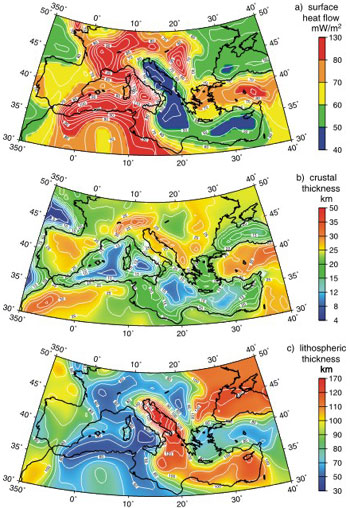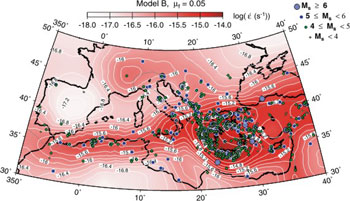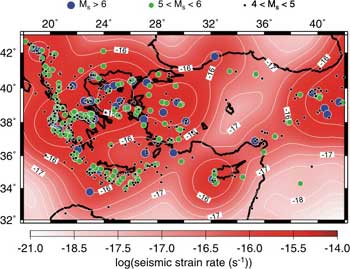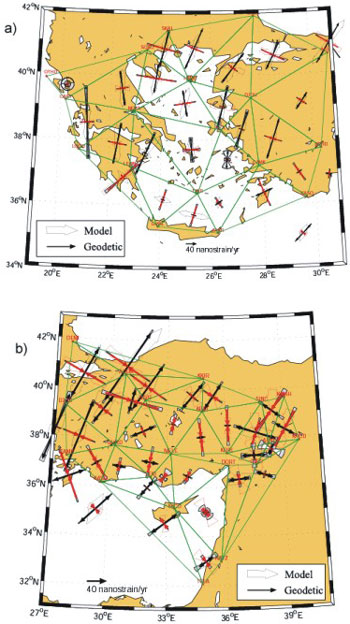| Research Publications Projects Curriculum Links Home |
|
Active deformation in the Mediterranean from Gibraltar to Anatolia inferred from numerical, geodetic and seismological data(pdf) |
|
|
From Gibraltar to Anatolia, the active tectonics in the Mediterranean is studied by means of an integrated approach based on geophysical, geodetic and seismological methodologies. The aim of this study is to gain a deep insight into the kinematics and dynamics of the crustal and lithospheric processes affecting the Mediterranean. Major tectonic processes, such as continental collision and subduction, characterize this region that marks a broad transition zone between the African/Arabian and Eurasian plates. A thin-shell finite element approach allows us to simulate the deformation pattern in the Mediterranean, from 10W to 40E and from 30 to 50N. The global plate motion model NUVEL-1A is used to account for the convergence, while the relative velocities of the overriding and subduction plates are obtained from another family of models. These models simulate the effects of the negatively buoyant density contrasts of the subducted lithosphere on the horizontal velocity at the surface. A systematic comparison between model results and the seismic strain rates obtained from the NEIC catalogue, the geodetic velocity field and strain resulting from GPS, SLR and VLBI analyses and the World Stress Map, indicate thatAfrica/Arabia vs Eurasia convergence and subduction in the Aegean Sea and Calabrian Arc are the major tectonic mechanisms controlling the deformation style in the Mediterranean. It is shown that, in order to carry into coincidence the modeled and the seismic strain rate patterns and the geodetically retrieved strain rate tensors, a deep subduction in the Aegean Arc must be included in the modeling |
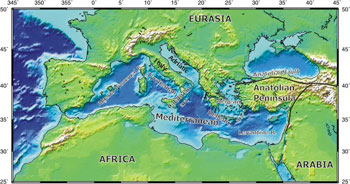
|
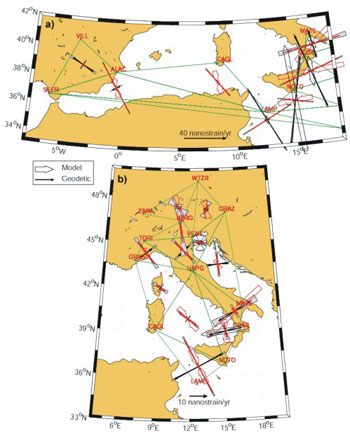 |
|
|
|
|
|
|
|
|
|
|
|
